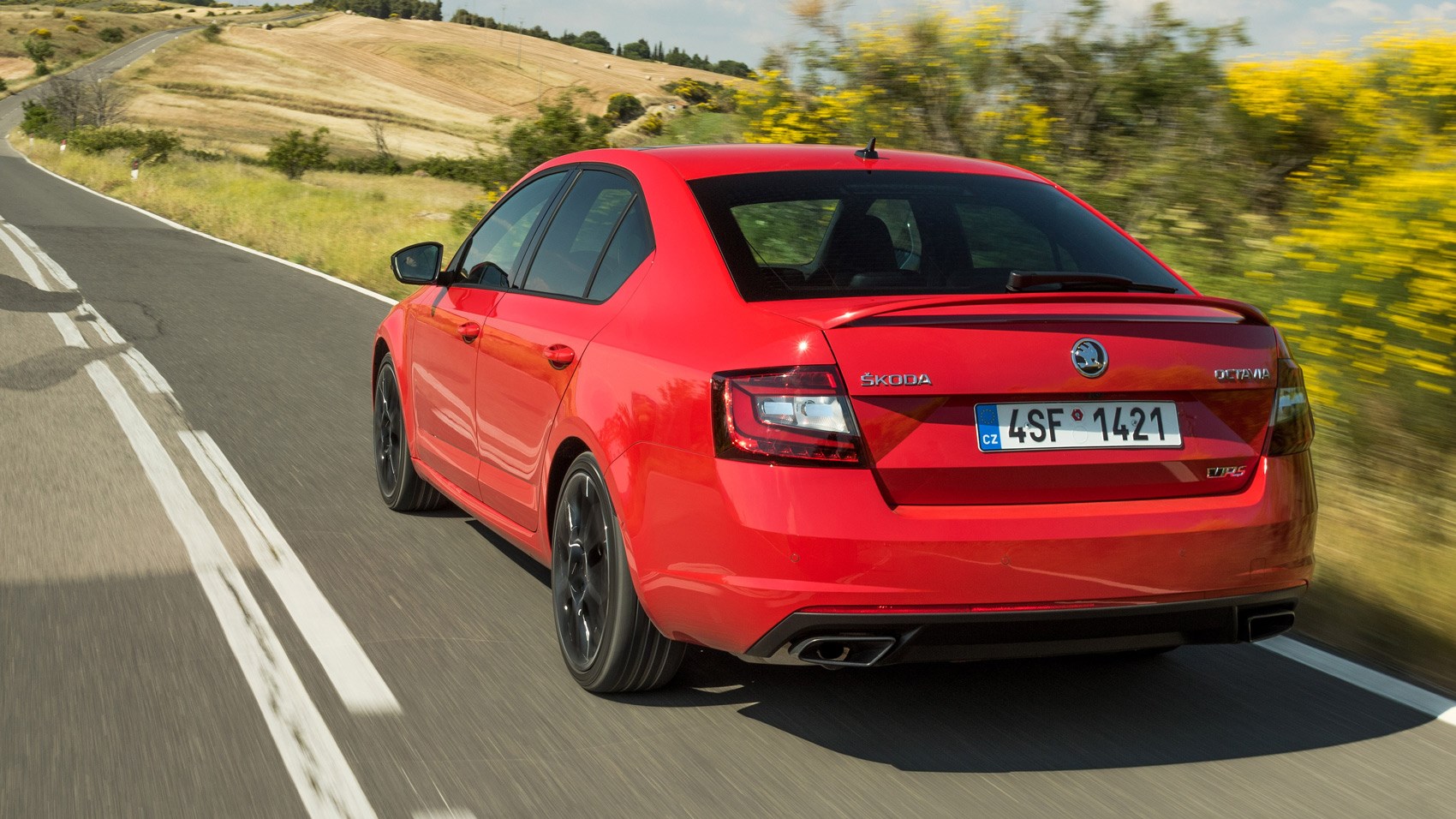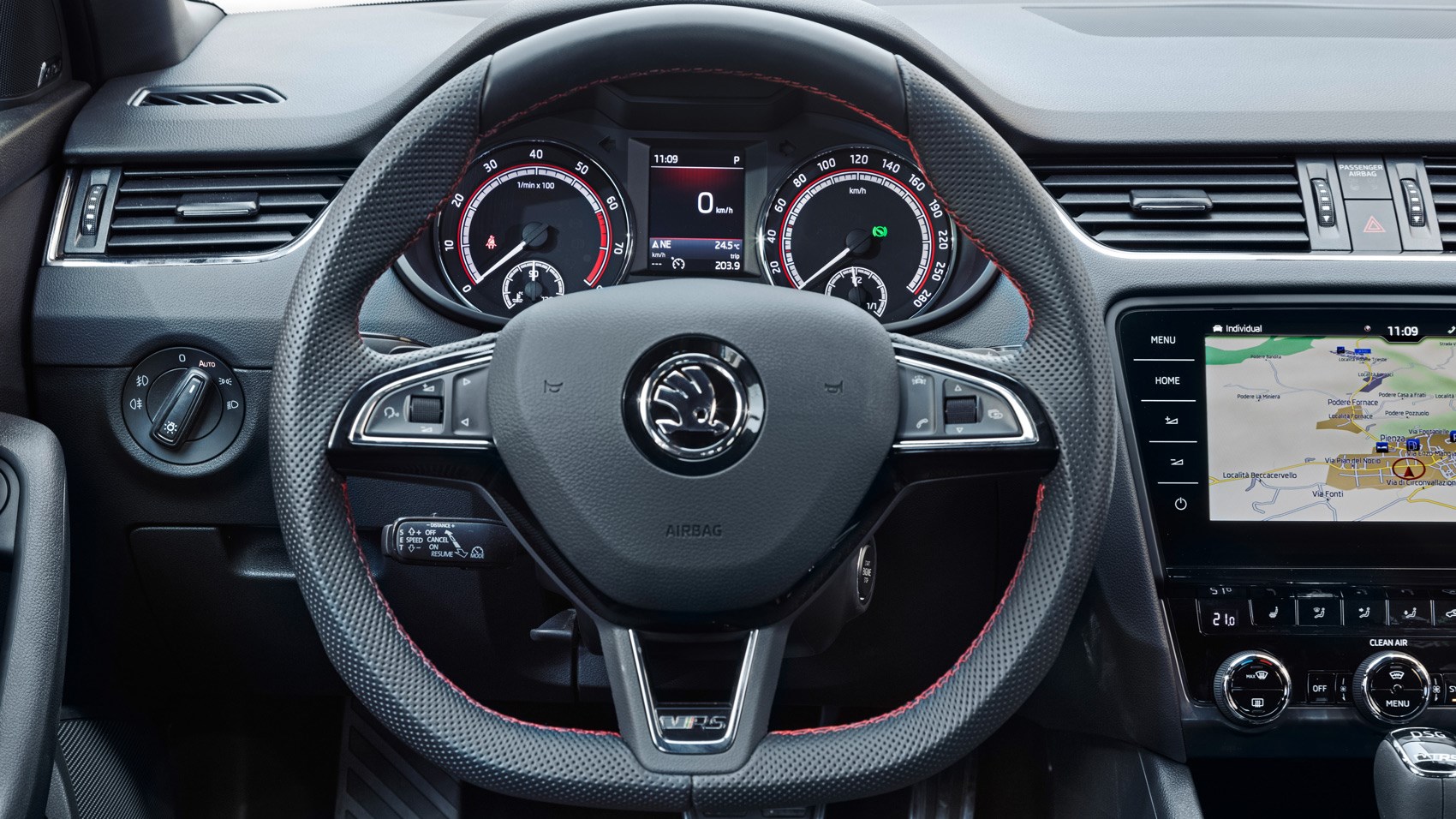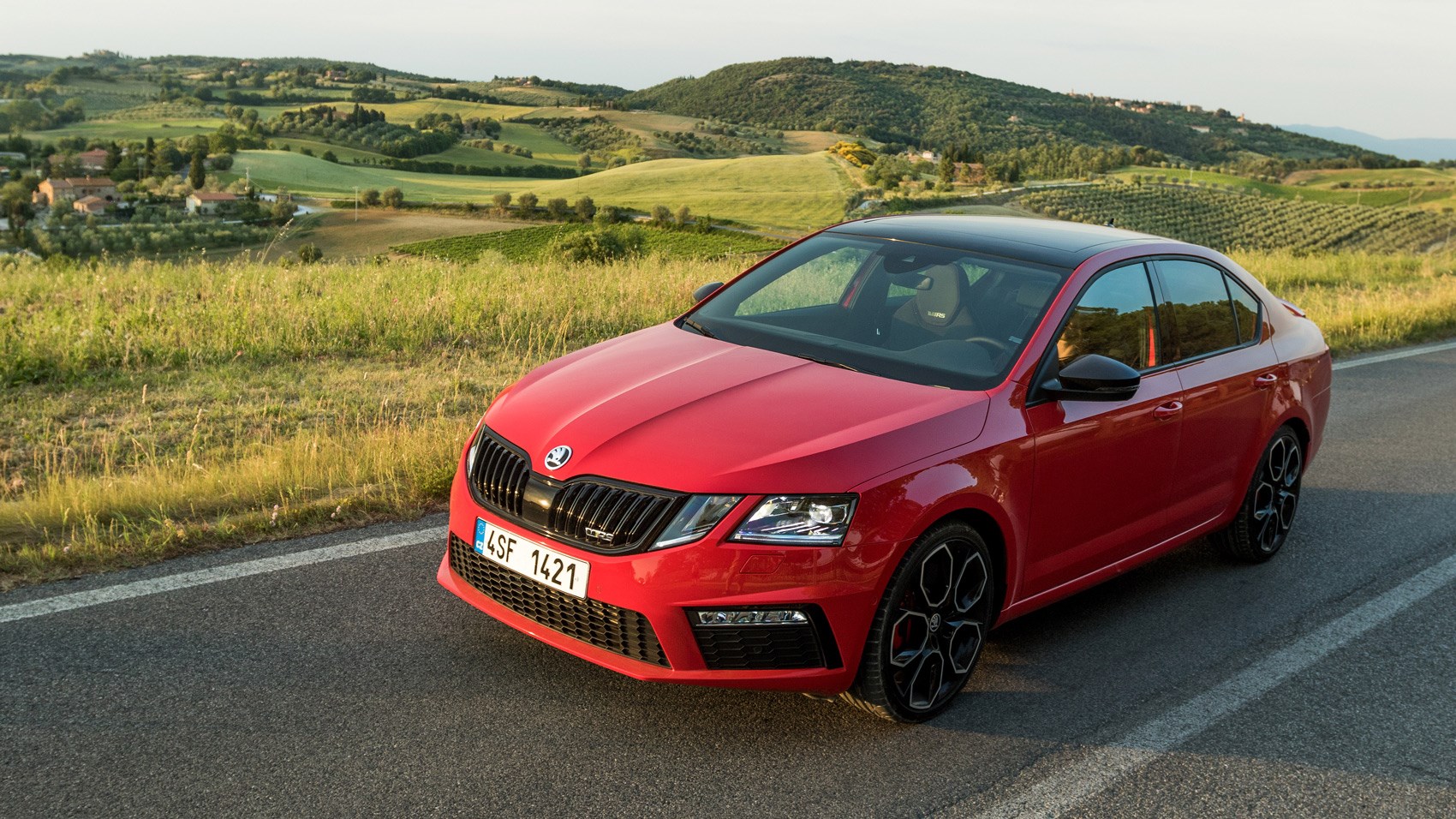►Skoda Octavia vRS 245 review
►15bhp power hike, limited-slip diff
► Auto models suffer from lumpy ride
Worldwide, 200,000 units of Skoda’s venerable Q-car, the Octavia vRS, have made their way to drivers aiming to dip under the radar. It’s one of the most practical cars in the C-segment, yet still with enough excitement on tap to enjoy a good blast when needed.
We drove the facelifted model only a few weeks ago, but now there’s another option on the table. It’s called the 245, which means power’s been upped by 15bhp, and you’ll struggle to spot one. The only exterior differences are 19-inch wheels and gloss black finishing for the grille, mirror housings and tailpipes.
Under the radar indeed.

Only 15bhp? The engine’s had a simple software reflash, then?
Actually it’s more technically involved than that. The developments may look iterative on paper, but they set the scene for further power and efficiency advancements in coming models.
With that in mind it’s a bigger job than you’d imagine, with the complete removal of the indirect (or port) fuel-injection system, engineers instead managing the same job with redesigned direct-injection nozzles and a new fuel pump to cope with the extra loads required to hit emissions and fuel economy targets.
New pistons have also been introduced and a turbocharger with different flow characteristics complete the under-bonnet engineering revisions.

But can you notice the difference?
If it wasn’t for the new exhaust system with its smaller catalytic convertor and muffler, making for a fruitier four-pot note both in and outside the car (we tested it in a tunnel, of course, just to be sure…), frankly you’d be hard-pushed to differentiate this engine’s performance from the lesser 227bhp vRS’s.
What’s more noticeable is the suspension, which retains the normal vRS springs and ride height but uses been re-valved dampers for a sportier set-up. This is where slight cracks begin to show, but it’s all about your choice of gearbox. The installation of the heavier automatic makes for nearly unforgivable ride quality on poor road surfaces.
Over some of the worst cracked and pot-holed routes around Rome – which believe me, are many and varied – on occasion it genuinely felt as if our next stop would be at a tyre garage to replace a damaged Pirelli P-Zero. And that’s with the adaptive dampers in Comfort mode.
It doesn’t play well with Skoda’s otherwise comfortable, almost serene approach to its vehicles’ characteristics.
This isn’t the only MQB car to suffer in this regard, however, with many performance models in the same boat. The bone-jarring Seat Leon Cupra is another obvious example.

So the Octavia vRS 245 is an uncomfortable car, then?
Actually, no. Save yourself some cash and pick the six-speed manual.
What would be a round-the-world trip for your osteopath transforms into a pleasurable drive that makes the most of the electronically controlled limited-slip diff (the same type as fitted on the Golf GTI Performance).
The extra compliance is there because the suspension wasn’t reconfigured for the automatic, so it was always going to be compromised.
This is still a front-driven 200bhp+ performance car, so the steering is never going to sing for its supper, but it features commendable weighting in Sport mode. The slightly firmer damping is compliant enough to play ball too, so we found ourselves eschewing Comfort mode and enjoying our jaunt down to the stunning Lago di Braccino very much.
The retuned exhaust compliments the engine’s turbo soundtrack – you can hear the spool of the compressor and the blow-off valve perfectly well with all windows up, yet it isn’t overly loud. The net effect is addictive, and if we didn’t have an extremely cool circuit to visit we may well have made a break for the border.

A Skoda on a racetrack? Surely not…
Hang on a second. Skoda’s motorsport genes stretch back 116 years, and what may seem incongruous to some is a rich vein of competition heritage running right through the company.
Our destination for the track portion of this test was the Vallelunga race circuit to the north of Rome. Homologated for F1 testing since 2001, this fast, flowing and challenging track that’s often used for winter set-up by LMP1 sportscar teams instead welcomed a practical family hatchback.
The first thing that impressed was the grip. You have to push extremely hard to get those 19-inch diameter tyres to break free. When they do, it’s with predictable understeer that can be caught by backing off the throttle a touch, at which point the 245 subtly twists its hips and adjusts its angle of attack.
It’s here you notice the reconfigured steering. It’s been tweaked so there are 2.11 turns between the lockstops rather than 2.45, allowing more precise inputs to place the car where you need it.
Driving quickly, you’re glad of the sports seats too. They’re supportive enough to keep you in place through Vallelunga’s fearsome first few bends, which are absolutely flat in the Octavia, and well-located through the slower hairpins later in the lap.
We’d perhaps have liked a little more bodily support under braking – the larger discs (340mm up front and 310mm at the rear) are gripped with huge force by the calipers and at times it feels like you’re giving the seatbelts a difficult day out.

Do nannying electrics stop play?
Stamp hard enough on the appropriate pedal to activate the emergency braking indicators and the gravelly sensation of ABS barely rears its head. This car is very controlled under braking, allowing steering adjustment to better your angle upon corner entry.
You’re able to adjust the intervention of torque-killing electronic safety systems too thanks to a two-stage system that allows for the switching off of the traction control alone via one touch of the button (power-on too early and you’ll get a one-tyre fire) or hold it down to additionally dial back the stability control and make the most of the Octavia’s body movement to retain momentum and keep up the speed.
Another key difference on the 245 is the fitment of the previously mentioned differential. This works in conjunction with the drive modes, stability and traction control settings to provide just the right amount of torque to each of the front wheels.
It works seamlessly, the impressive bit being that during slow driving you won’t know it’s there, while at speed it makes a massive difference to the way the vRS hauls itself out of corners.
Verdict
We’ve long been fans of the Skoda Octavia vRS’s no-nonsense approach to fast family motoring, but the new 245 model is demonstrably the best yet.
It doesn’t stand up against the best in this sector as a pure driving toy, but as a consummate all-rounder it’s pretty difficult to beat – especially once you start crunching some numbers. Just steer clear of the automatic ’box.